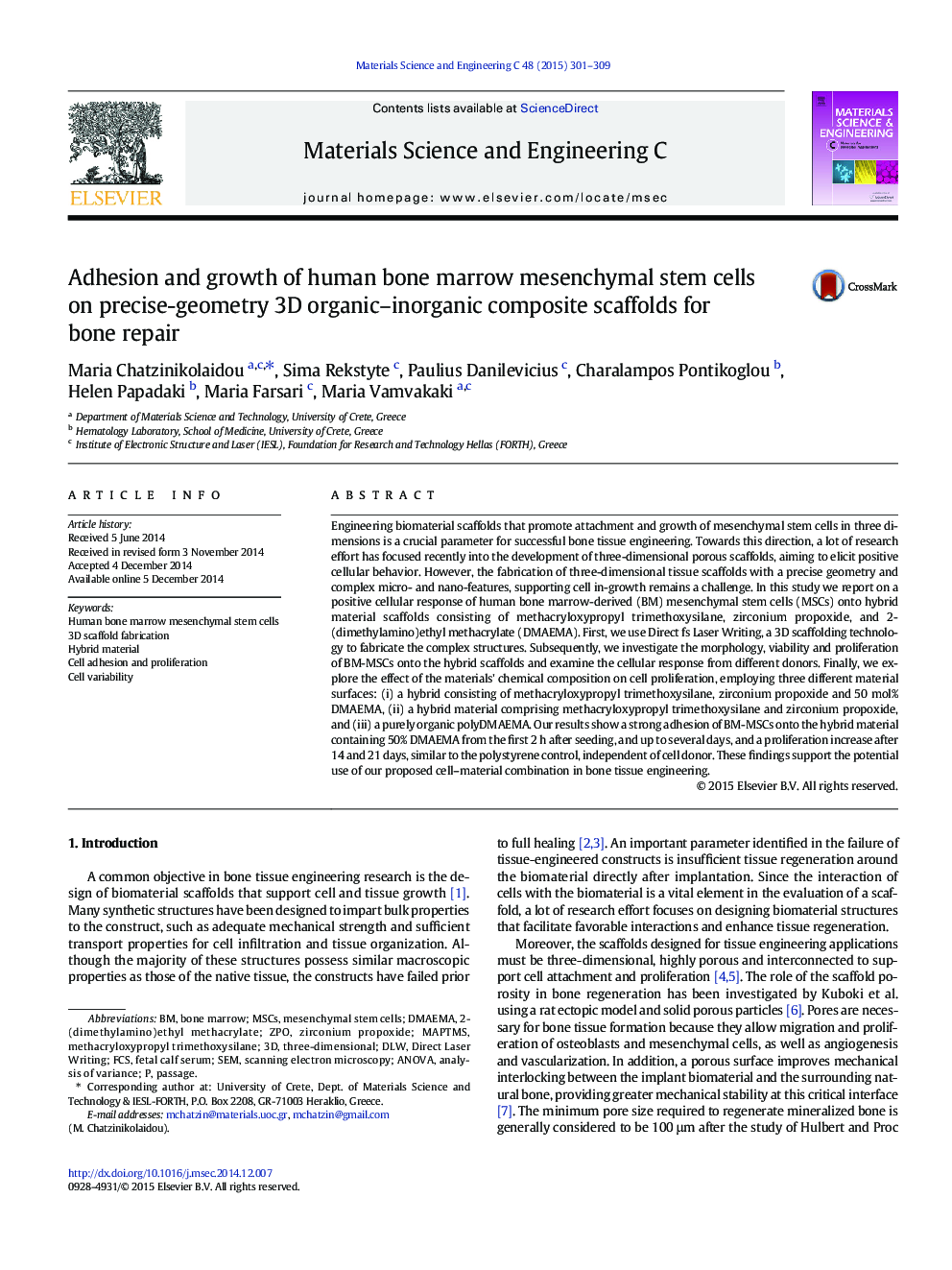| Article ID | Journal | Published Year | Pages | File Type |
|---|---|---|---|---|
| 1428461 | Materials Science and Engineering: C | 2015 | 9 Pages |
•The fabrication of high-precision complex-geometry scaffolds by Direct Laser Writing•The influence of materials' composition on BM-MSCs proliferation•The adhesion and morphology of BM-MSCs onto films and complex-geometry scaffolds•The variability of the BM-MSCs proliferation from three different human donors
Engineering biomaterial scaffolds that promote attachment and growth of mesenchymal stem cells in three dimensions is a crucial parameter for successful bone tissue engineering. Towards this direction, a lot of research effort has focused recently into the development of three-dimensional porous scaffolds, aiming to elicit positive cellular behavior. However, the fabrication of three-dimensional tissue scaffolds with a precise geometry and complex micro- and nano-features, supporting cell in-growth remains a challenge. In this study we report on a positive cellular response of human bone marrow-derived (BM) mesenchymal stem cells (MSCs) onto hybrid material scaffolds consisting of methacryloxypropyl trimethoxysilane, zirconium propoxide, and 2-(dimethylamino)ethyl methacrylate (DMAEMA). First, we use Direct fs Laser Writing, a 3D scaffolding technology to fabricate the complex structures. Subsequently, we investigate the morphology, viability and proliferation of BM-MSCs onto the hybrid scaffolds and examine the cellular response from different donors. Finally, we explore the effect of the materials' chemical composition on cell proliferation, employing three different material surfaces: (i) a hybrid consisting of methacryloxypropyl trimethoxysilane, zirconium propoxide and 50 mol% DMAEMA, (ii) a hybrid material comprising methacryloxypropyl trimethoxysilane and zirconium propoxide, and (iii) a purely organic polyDMAEMA. Our results show a strong adhesion of BM-MSCs onto the hybrid material containing 50% DMAEMA from the first 2 h after seeding, and up to several days, and a proliferation increase after 14 and 21 days, similar to the polystyrene control, independent of cell donor. These findings support the potential use of our proposed cell–material combination in bone tissue engineering.
Graphical abstractScanning electron microscopy image depicting cell adhesion of bone marrow mesenchymal stem cells into a pore of a hybrid Direct Laser Writing fabricated scaffold with a high precision complex geometry.Figure optionsDownload full-size imageDownload as PowerPoint slide
